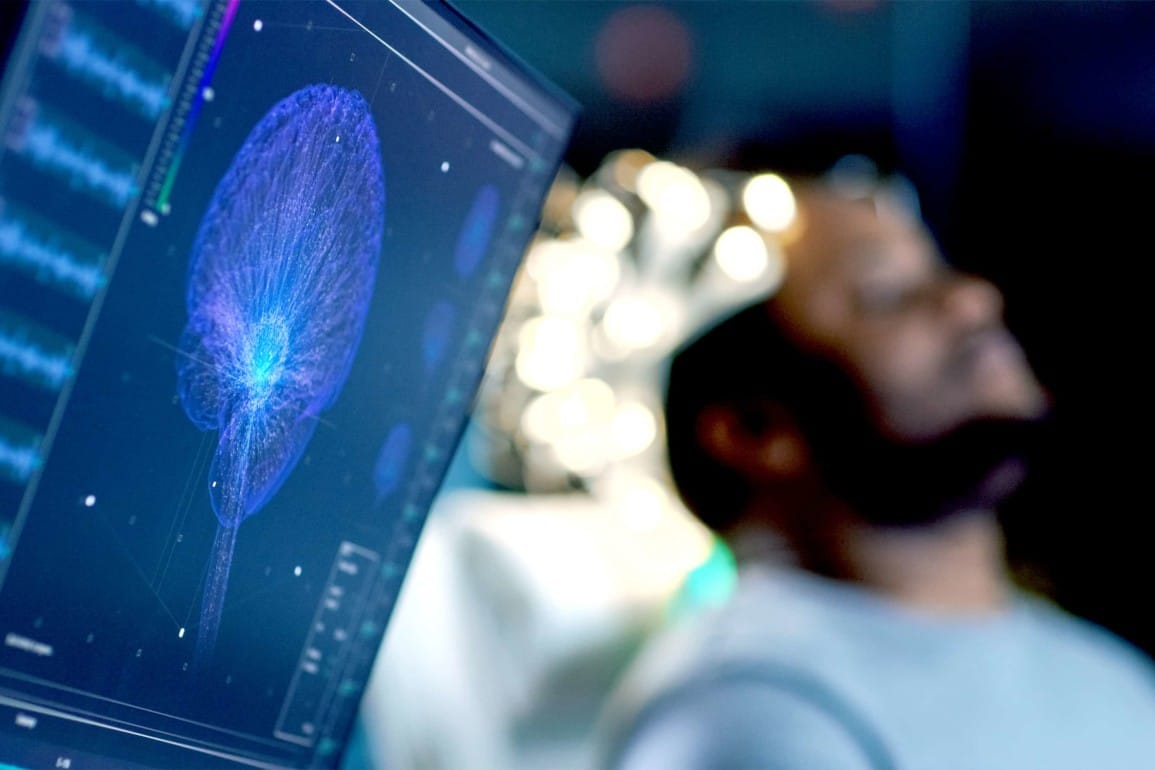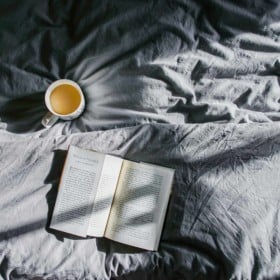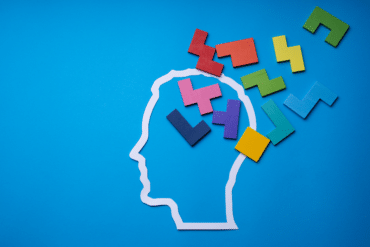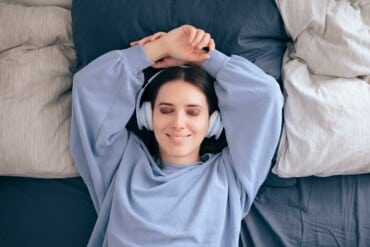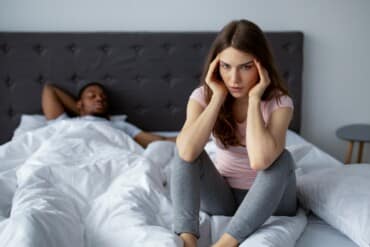Spending the night in a lab hooked up to wires and machines probably doesn’t sound like fun.
When you’re struggling with insomnia, the chances are that you’d much rather spend your evenings in a comfortable bed, than being poked and prodded by doctors.
However, sometimes the best way to get to the bottom of sleep problems is to investigate where they come from.
Sleep might be one of the most important things for the human body. It’s also incredibly elusive.
It’s all too easy to lose sleep because you’re disrupted by anxiety or dealing with issues like late-night sleepwalking.
To make matters worse, there are so many different kinds of sleep disorders. There are also numerous factors that might cause those disorders.
For instance, your sleepless nights could be caused by stress, a change in your medication, problems with your hormone balance, and a dozen other things.
Sleep studies are how we get to the root of the problem, and nip that sleeping issue in the bud.
What is a sleep study? The basics of polysomnography
Before you start to panic that taking a sleeping study means participating in some exhausting exam or painful test, the first thing you need to know is that sleep studies are non-invasive.
Depending on the type of sleep study your doctor suggests, you’ll probably spend a night in a lab. This will allow doctors to monitor you while you sleep.
With things like polysomnography equipment, doctors can see what’s going on under the surface of your brain when you’re sleeping.
EEG monitors can track your sleep stages. Other tools examine things like eye movements or muscle contractions throughout the night.
Most sleep studies are intentionally conducted in rooms that are made up to be as comfortable as possible for the participant.
There might be a few flashing lights around, but for the most part, your doctors and specialists will do everything they can to avoid disrupting your sleep.
Your doctor will usually ask you to arrive to the location early, so you can also start your normal bedtime routine within the lab. You might like to read a book, or calmly change into your PJs.
The biggest focus of a sleep study is obviously finding out what happens in your brain when you sleep. You might be worried: “What if I can’t sleep during a sleep study?”
After all, if you have insomnia at the best of times, putting yourself into an unfamiliar room with strange people probably won’t make it easier to drift off.
The good news is that most sleep study environments will allow you to bring items from home to help you feel more comfortable.
Additionally, the lab technicians won’t necessarily need you to stay asleep all night to gather plenty of handy information.
Even just a little bit of shut-eye under observation can go a long way.
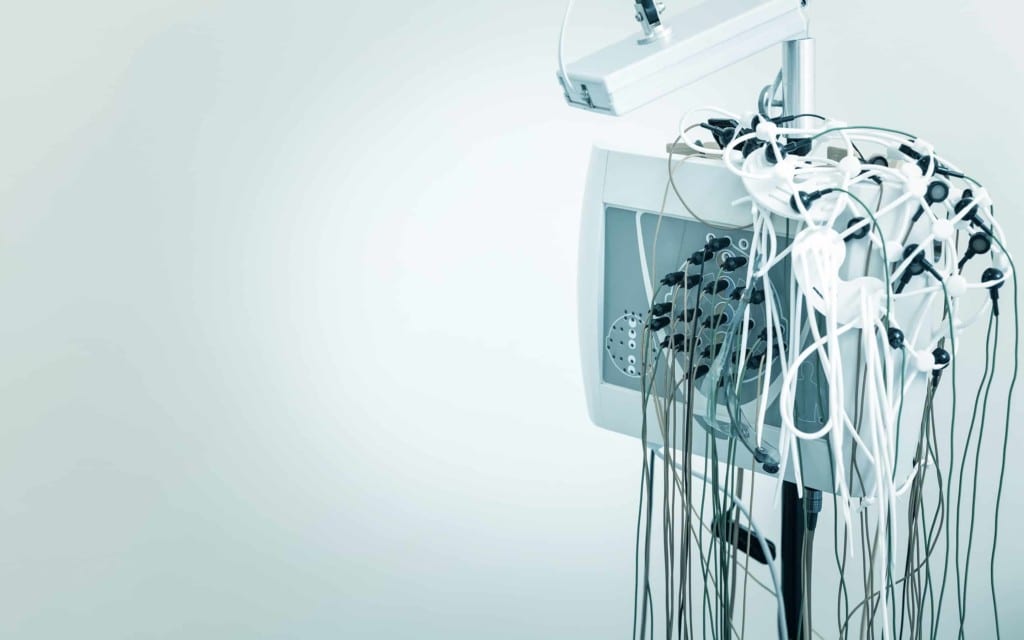
How sleep studies work: Polysomnography equipment
There are many different kinds of sleep study available today, intended to help people deal with a wide range of disorders. Each test comes with its own specialist tools and equipment.
For the purpose of this article, we’ll be concentrating on the most common kind of sleep study: Polysomnography.
Polysomnography is the basic sleep study used to try and diagnose common sleep disorders.
The polysomnography equipment used in lab records many details. It monitors your blood oxygen levels, your brain waves and your muscle tension, to help doctors determine what’s causing you not to sleep.
After you arrive at the sleep centre, a professional will apply small sensors to your body and head using adhesive. Usually, these sensors shouldn’t cause too much discomfort, and you’ll be able to sleep naturally with them attached.
The wires connecting you to a computer are usually very long, so you can even move around during the night without getting too wrapped up.
The most important technology in a polysomnography sleep study is an EEG monitor. Electroencephalography allows scientists to track your brain waves, and diagnose things like:
- Periodic limb movement disorder
- Narcolepsy
- Sleep apnea and breathing issues
- Unusual activity during sleep
- REM sleep behavior disorder
To ensure that you’re properly prepared for your sleep study, your doctor or specialist will also ask you to follow a few basic instructions during the day.
For instance, you may need to refrain from drinking caffeine or using alcohol and other stimulants.
Your doctor might also ask you to avoid taking a nap during the day, even if you don’t sleep well the night before.
Napping during the day might make it harder for you to fall asleep at night in the lab.
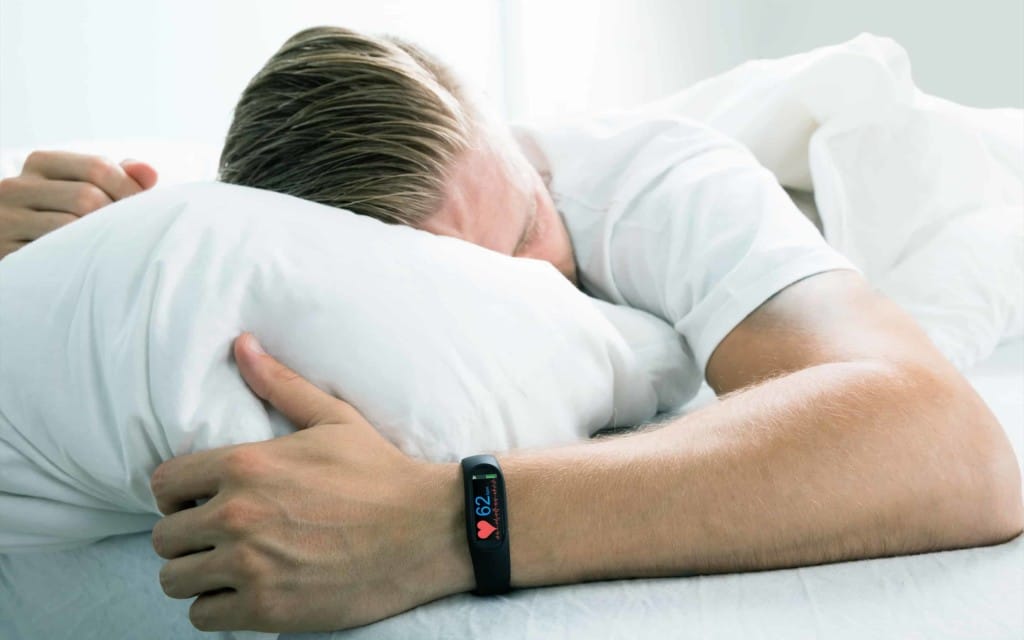
Do I need a sleep study?
Millions of people around the world are affected by chronic sleeping disorders and insomnia. We know that lack of sleep is dangerous to our physical and mental health.
It is diminishing safety, alertness, and performance. Untreated sleep disorders have been linked to everything from depression and anxiety to heart disease, an increased risk of stroke, and more.
However, just because you have a sleep disorder, doesn’t always mean that you’re going to need a sleep study. Some doctors and specialists can pinpoint the cause of sleeping problems without a study.
For instance, if you’re constantly switching up your sleeping schedule due to changes in your shift patterns at work, then you probably know that you need more balance to get to sleep at night.
Additionally, if you’re drinking alcohol before bed, your doctor could simply advise you to avoid this going forward, as alcohol often disrupts sleep.
Sleep studies and polysomnography are usually recommended for people who have chronic, undiagnosed issues with their sleep.
Mostly a sleep study is conducted if you’ve tried numerous interventions and can’t get the right quality of sleep.
With a little luck, the right study will help doctors to see why simply improving your sleep hygiene isn’t working to give you more rest.
To determine whether you might need a sleep study, ask yourself:
- Do you constantly have problems with getting to sleep or staying asleep?
- Do you have a problem with snoring, or find yourself waking up gasping for air?
- Have your muscles and legs been strangely active during the evening? Do you feel the urge to move or kick your legs when you’re awake?
- Does fatigue and sleeplessness have a huge impact on your life? Have you been dealing with these problems for 3 weeks or more?
- Are you so tired due to your sleep issues that you can’t function normally during the day anymore?
Many doctors will be willing to consider your request for a sleep study, if you can explain why you think your issue needs further investigation.
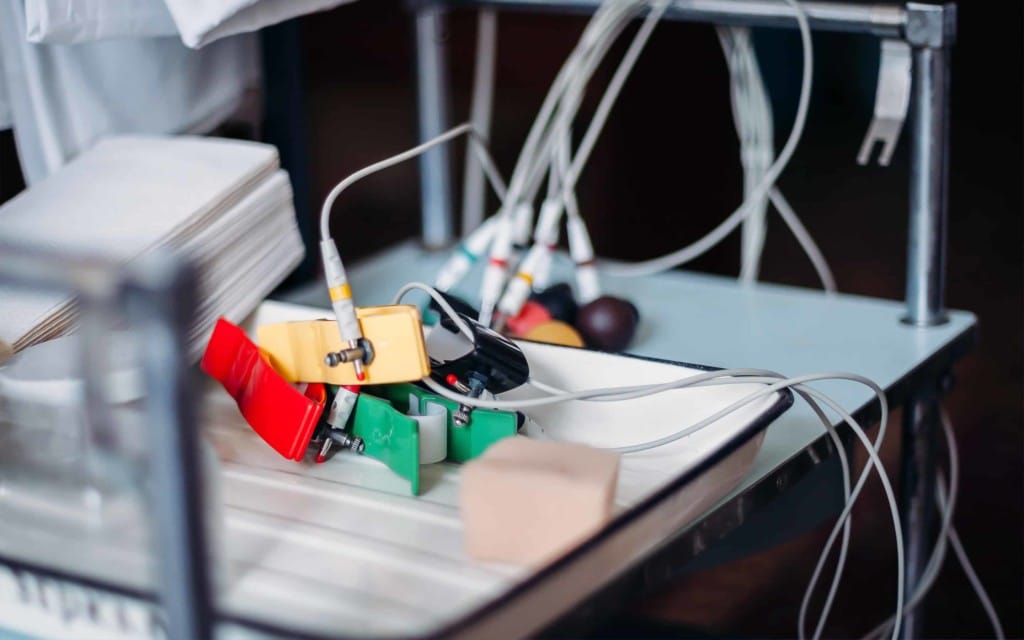
What happens during a sleep study?
If, after providing plenty of sleep hygiene advice, your doctor decides to conduct a sleep study, the most common choice will be to use polysomnography.
A polysomnogram, as we mentioned above, measures your brain waves and other activity that takes place during sleep.
This includes:
- Heart rate
- Breathing
- Leg movements
- Eye movements
- Blood oxygen levels
Polysomnography equipment is great at picking up the disruptions in the normal flow of sleep as you move through each stage of your typical cycle.
When you go for your sleep study, you’ll simply be asked to sleep in a quiet and private room. There’ll be equipment attached to your body that allows technicians to monitor you.
Most polysomnography tests feature anywhere up to 27 electrodes attached to various parts of your body with wires. The electrodes will gather data while you rest.
People from the study won’t need to stay in the same room as you while you sleep. If you need to get up during the night to go the bathroom, however, a technician will be available to help you navigate all the technology and equipment around you.
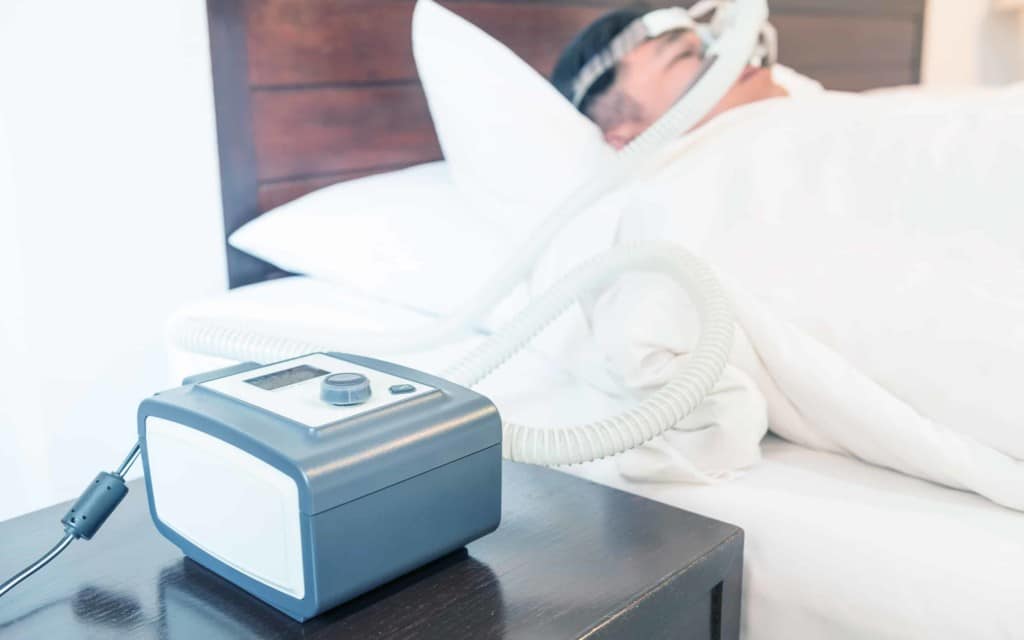
What does a sleep study show?
Usually, your sleep study technicians won’t be able to tell you much about your condition or what happened during the night when you wake up the next morning.
Sleep study participants are often sent home right after their test.
Thereafter doctors and specialists have a chance to review their findings and come up with a diagnosis.
Once your polysomnography test is fully evaluated, someone will be in touch to arrange a follow-up appointment.
A polysomnogram can produce a lot of useful information into how you sleep. It can even see whether you’re experiencing night terrors or nightmares.
Using the information gleaned from a polysomnography test, your doctor may be able to diagnose things like:
- Central or obstructive sleep apnea.
- REM behavior disorder, like sleepwalking and sleep talking.
- Idiopathic hypersomnia and narcolepsy disorders.
- Non-24-hour-sleep wake syndrome, advanced sleep phase syndrome, or delayed sleep phase syndrome.
- Bruxism, restless leg syndrome, or periodic limb movement disorder.
Of course, there’s always a risk your doctor won’t be sure what’s causing your problems with sleep.
This means that you end up walking away with undiagnosed insomnia. However, just because your doctor hasn’t found a cause for your problem, doesn’t mean that he or she can’t suggest treatments.
There are many natural treatments for insomnia available. Your specialist might ask you to try these before moving onto medications.
Additionally, for both undiagnosed and diagnosed conditions, doctors can also consider passing your case onto a specialist for things like cognitive behavioural therapy.
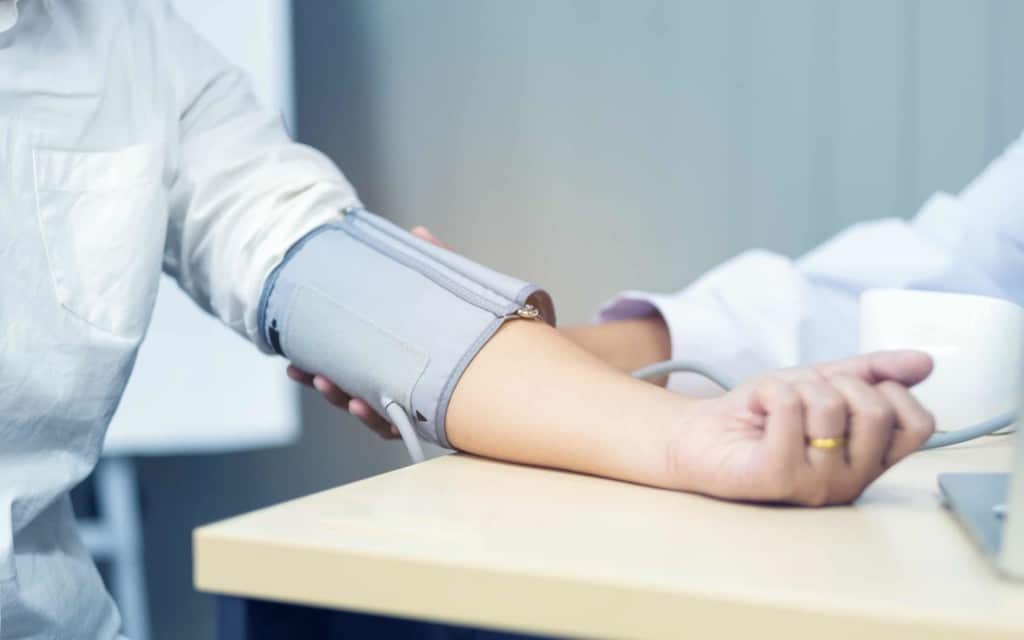
What happens after a sleep study?
After you have completed your sleep study, your doctor will work with you to come up with a plan for overcoming your issues.
Some sleep conditions are easier to handle than others.
For instance, while sleep apnea might be worrisome, there are many pre-existing treatment solutions designed to help people breathe better at night.
On the other hand, your doctor might not be able to cure something like restless leg syndrome by telling you to buy a new piece of equipment.
The good news is that there are a lot of different recovery strategies to try today.
Your doctor can guide you through various therapeutic treatments. It could be hypnosis, supplemental drugs, and even medications, to ensure you end up with something that works for you.
Today, there are people all over the world dealing with the headache of a persistent sleep disorder.
If you’ve been struggling with insomnia for a while now, then a sleep study could be the best way to figure out what’s causing your disorder.
Check out the other articles at siestio.com for insights into the kind of common sleep issues that people suffer from across the globe, and the treatment options that might be available for you.
Siestio. Sleep Matters.
Medical disclaimer
You must not rely on the information provided on our website as an alternative to medical advice from your doctor or other healthcare professionals. For more information read our full disclaimer here.

